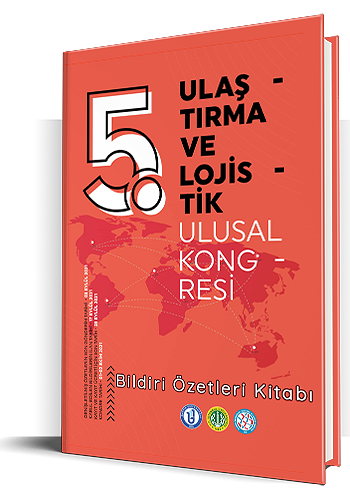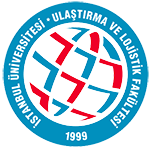
Ulaştırma ve Lojistik Kongreleri
- Türkçe
- Özet
- 2021
Afet Lojistiğinde İnsansız Hava Araçları Kabiliyetlerine Erişim
Mutlu Can Soydan
Öğr. Gör., Niğde Ömer Halisdemir Üniversitesi, Niğde, Türkiye
Son yıllarda afetler, beraberinde yıkıcı etkiler de getirmesiyle birlikte ekonomik, sosyal ve psikolojik açılardan dünyayı ve insanoğlunu doğrudan etkilemektedir. Bu noktada afetlerin yönetimine proaktif, koordineli ve efektif bir yaklaşım sergilemek önem arz etmektedir. Nitekim afetlerin her bir türünde korunmasız olarak nitelendirilebilecek bireylerin kişisel ihtiyaçları, ürün ve hizmet satın alma ihtiyaçları ve taşıma – depolama – sigortalama türündeki ihtiyaçları mümkün olan en ivedi biçimde karşılanmalıdır. Bu koordinasyon afet öncesi, afet anı ve afetin iyileştirilmesi aşamalarında kusursuz uygulanmalıdır. Afetlerin yönetimine bu tür bir yaklaşım için sıkça hava araçlarının varlığından ve bu araçlar üzerinden gelişen teknolojiden yararlanılmaktadır. Bu araçlar sayesinde birbirinden farklı afet senaryosunda, alternatifli stratejiler ve buna bağlı olarak yepyeni yol haritaları ortaya çıkarılmaktadır. Hava araçlarının insansız olarak geliştirilmesi ise afet yönetimine birden çok fayda sağlamaktadır. İnsansız hava araçlarının; afet bölge ya da bölgelerine ulaşımı en kısa yoldan belirleyebilmesi, güvenli ve doğru zamanda yapılacak kritik tıbbi yardım transferlerine imkan sağlaması, altyapı hasarlarını sağlıklı bir biçimde değerlendirebilmesi, taşıma – dağıtım sisteminin etkinliğine katkı sağlaması, stok bölgelerine transferler yapabilmesi, en kısa sürede ve sayıca en çok korunmasız kişiye ulaşabilme olasılığını artırması ve bu olasılığı artırırken de arama – kurtarma ekipleri için olası riskleri azaltması sağladığı faydalardan en önemlileridir. Bu kabiliyetlerin temelinde ise söz konusu hava araçlarının herhangi bir alandan kalkış ve iniş yapabilmesi, uzaktan kumandalı, yarı veya tam otomatik uçuş yeteneğine sahip olması yatmaktadır. Yerden kontrol edilebilir olması ve otomatik olarak uçuş planlamasını gerçekleştirebilmesi de insansız hava araçlarını afet lojistiği sürecinde cazip kılmaktadır. Bu noktadan hareketle çalışma, afetin gerçekleştiği ülkenin sivil havacılık otoritesi ve yine aynı ülkenin sivil toplum kuruluşları ile entegre bir sivil iletişim ağının geliştirilmesine dayanmaktadır. Bu entegrasyon fikri doğrudan doğal afetlere müdahale süresinin geliştirilmesine yöneliktir. Çalışma, iki temel kısımdan oluşmaktadır. İlk kısımda sektörde görülen ve / veya görülecek afet lojistiğine insansız hava araçları ile gerçekleştirilen müdahale uygulamaları ve bu uygulamaların uygulanabilirliği konusu üzerinde yoğunlaşılmıştır. İkinci kısımda ise, ilk bölümün doğal sonucu olarak gelişen; afet lojistiğinde insansız hava araçlarına erişimine ilişkin perspektiflerin geliştirilmesi amacına hizmet etmektedir. Çalışmada irdelenen hususlar konu hakkında esaslı bir anlayış oluşturulması açısından; uluslararası dokümanların ve istatistiki veri kaynaklarının incelenmesi yöntemiyle derlenmiş, bu derlemenin yorumlanması ise birbiriyle bağlantılı bir yaklaşım ile ortaya koyulmuştur. Bu araştırma konusu özelinde genel çerçevenin çizilirken; ihtiyaç duyulan dokümanların ulaşılabilirlik durumu, dokümanların özgünlüğünün kontrolü, dokümanların anlaşılabilirliği (çalışma boyunca özellikle yabancı dilden çeviriler gerçekleştirilmiştir), bilgilerin analiz edilebilirliği ve verilerin tarafsız olup olmaması hali bir süreç halinde gözden geçirilmiştir. Çalışmada irdelenen hususlar önce insansız hava araçlarını konu alan uluslararası akademik çalışmalar derlenerek oluşturulmuş, ardından sistematik ve nomotetik bir bakış açısıyla yorumlanmıştır. Bu yöntem doğrultusunda çalışma, neticede afetlerdeki uygulamaların en efektif biçimde hayata geçirebilmeleri amacına yönelik ‘’Sivil havacılık çerçevesinde, afet lojistiğinde insansız hava araçları kabiliyetlerine daha kolay bir erişimin mümkün olup olamayacağı ile ilgili perspektifler geliştirilebilir mi?’’ şeklinde yegâne bir problemin çözümünü aramıştır. Çalışmada ortaya çıkan en temel bulgu ise afet lojistiğinde insansız hava araçları kabiliyetlerine olan bakış açılarının doğru yönlendirilmesiyle mümkün olabileceğidir. Çalışma söz konusu önerinin, yalnız biyolojik tabanlı afetlerde etki göstereceğini tartışmaktadır. Çalışmanın son bölümünde havacılığa yön veren bu tür uygulamaların etkinliklerinin geliştirilmesine yönelik çözüm önerileri sunulmuştur.
Anahtar Kelimeler: Afet Lojistiği, Drone, İnsansız Hava Araçları, İHA, Sivil Havacılık
Access To Unmanned Aircraft Capabilities In Disaster Logistics
In recent years, disasters affect the world and human beings in terms of economic, social and psychological aspects, with devastating effects. It is important to display a proactive, coordinated, and effective approach to disaster management. The personal needs of individuals who can be described as vulnerable in many disasters, their needs for purchasing products and services, transportation and storage. So the insurance should be met as soon as possible. This coordination should be implemented during the pre-disaster, disaster recovery, and disaster recovery stages. For such an approach to disaster management, the existence of aircraft and the technology developed over these vehicles are used. Thanks to these vehicles, alternative strategies and new roadmaps are created in different disaster scenarios. The development of unmanned aircraft provides multiple benefits to disaster management. The most important benefits are the ability to; it can determine the transportation on the disaster area or regions in the shortest way, enable safe and critical medical aid transfers, infrastructure evaluate the damage in a healthy way, contribute to the efficiency of the transportation - distribution system, making transfers to the stock areas in this direction, increase the possibility of reaching the most vulnerable people in the shortest time and in number. While increasing this probability, this reduces possible risks for search and rescue teams, creates the infrastructure of evaluation on the damage in a healthy way, contribute to the efficiency of the transportation-distribution system and also makes transfers to the stock areas in this directions. The basis of these capabilities lies in the ability of these aircraft to take off and land from any area, and to have remote-controlled, semi- or automatic flight capability. It can be controlled from the ground and it makes unmanned aerial vehicles attractive while performing flight planning in the disaster logistics process. From this point of view, the study based on the development of an integrated civil communication network with the civil aviation authority of the country and the non-governmental organizations of the same country where the disaster occurred. This integration idea directly aims to improve response time to natural disasters. The study consists of two main parts. In the first part, it has been focused on the application of unmanned aerial vehicles to the disaster logistics seen and / or to be seen in the sector and the practicability of these applications. In the second part, developed because of the first part; it serves the purpose of developing perspectives on access to unmanned aerial vehicles in disaster logistics. The issues discussed in the study are to create a fundamental understanding about the subject and develop over one empirical knowledge; It has been compiled by the method of examining international documents and statistical data sources and it has been revealed by interpreting this compilation used an interconnected approach. While drawing the general framework for this research subject; the availability of the required documents, the control of the originality of the documents, the intelligibility of the documents (especially the translations from foreign languages were carried out during the study), the analyzability of the information and the impartiality of the data were reviewed as a process. The issues examined in the study were first created by compiling international academic studies on unmanned aerial vehicles and then interpreted from a systematic and nomothetic perspective. In line with this method, the study sought the solution of a unique problem: “Will perspectives be developed on whether an easier access to unmanned aerial vehicle capabilities will be possible in disaster logistics within the framework of civil aviation?” The most finding that emerged in the study is being possible with the correct orientation of the perspectives on the capabilities of unmanned aerial vehicles in disaster logistics. The study argues that the aforementioned proposal will only be effective in biological-based disasters. In the last part of the study, solution suggestions were presented to improve the effectiveness of such applications that shape aviation.
Keywords: UAV, Civil Aviation, Drone, disaster logistics, Unmanned Aerial Vehicles


Bu çalışma, kullanan kişilere orjinal çalışmadan alıntı yaptıkları sürece, çalışmayı dağıtma, değiştirme ve üzerine çalışma hakkı tanıyan Attribution 4.0 International (CC BY 4.0) lisansı ile lisanslanmıştır.
İletişim
İstanbul Üniversitesi Ulaştırma ve Lojistik Fakültesi
İ.Ü. Avcılar Kampüsü 34320 Avcılar/İstanbul
ulk@istanbul.edu.tr
+ 90 (212) 440 00 00 - 19200


